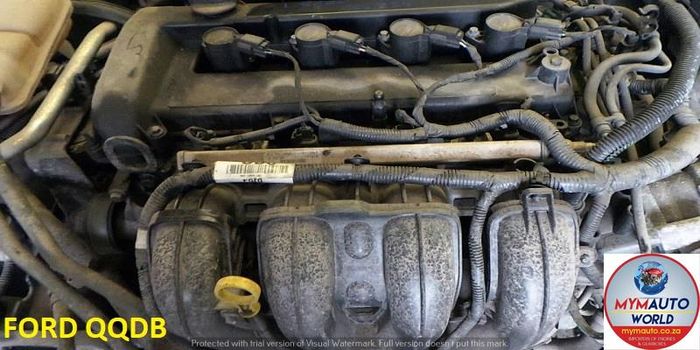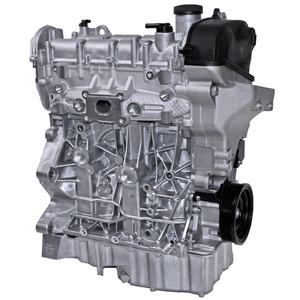Opel Corsa Engine: Performance and Integrity for Your Lorry
Wiki Article
Exploring the Inner Operation of a Compact Automobile's Engine System
As chauffeurs, we frequently take for given the detailed processes that take place within the confines of our automobile's engine system. In this expedition of a compact automobile's engine system, we will untangle the inner workings of this mechanical harmony, dropping light on the mysteries that drive us forward on our day-to-day trips.Combustion Process Summary
The combustion process in a portable automobile's engine system is an essential system that effectively converts gas into power to power the vehicle. This procedure takes place within the burning chamber of the engine, where gas and air mix, fire up, and generate controlled surges. The burning process is composed of 4 primary phases: consumption, compression, power, and exhaust.Throughout the consumption phase, the piston moves downward, reeling in a combination of air and fuel into the combustion chamber. The next phase, compression, involves the piston relocating up, pressing the air-fuel mixture to boost its strength. Ultimately, in the power stage, the ignition system stirs up the pressed mixture, leading to a fast growth of gases that compels the piston back down. This descending motion generates the power needed to drive the vehicle. Ultimately, in the exhaust phase, the burnt gases are removed from the combustion chamber through the exhaust valve, preparing the chamber for the next cycle. This cyclic burning process is essential to the operation of a compact automobile's engine system, making certain reliable energy conversion for propulsion.
Piston and Cylinder Interaction

The piston's exact fit within the cyndrical tube is necessary for maintaining optimum compression and stopping energy loss throughout combustion. Tight clearances in between the piston and cyndrical tube wall surfaces guarantee effective securing, permitting the piston to relocate smoothly without allowing gases to leakage past. Proper lubrication is additionally crucial to minimize rubbing and use between these components, enhancing longevity and performance.
In addition, the layout and materials made use of in producing the piston and cylinder impact engine effectiveness and durability. Modern engines frequently utilize light-weight yet long lasting products like light weight aluminum alloys for pistons and cylinder linings to decrease inertia and boost thermal performance. Generally, the harmonious communication in between the piston and cylinder is fundamental to the engine's functionality and general efficiency.
Fuel Shot System Capability
Gas injection systems in small lorry engines play a vital function in precisely providing fuel to the burning chamber for controlled and efficient ignition. The gas shot system works by infusing fuel into the combustion chamber at the ideal minute throughout the engine's procedure (opel corsa engine). This accurate timing guarantees that the fuel blends equally with the air for correct burning, bring about boosted gas effectiveness and decreased dischargesThere are primarily two sorts of fuel shot systems utilized in compact automobile engines: port gas injection (PFI) and straight gas injection (DFI) PFI systems inject gas into the intake port before the consumption valve, while DFI systems infuse gas straight right into the burning chamber. Both systems have their benefits, with DFI offering better gas atomization and PFI providing a much more cost-efficient remedy.
Recognizing Engine Air Conditioning Devices
Effective operation of a compact automobile's engine relies greatly on the efficiency of its cooling devices. Engine air conditioning is important to prevent getting too hot, which can lead to significant damages and reduced performance. The cooling system in a compact lorry generally contains a number of components collaborating to control the engine article temperature. One crucial part is the radiator, which utilizes coolant to take in warmth from the engine. As the warm coolant moves with the radiator, it launches warmth right into the air, cooling off prior to going back to the engine. The water pump circulates the coolant through the engine and radiator, making sure a constant flow to control temperature. In addition, the thermostat assists regulate the coolant circulation to maintain optimum engine temperature level. Some automobiles also have cooling down fans that activate when additional cooling is required, such as during heavy website traffic or heat. Recognizing these engine air conditioning devices is crucial for preserving the efficiency and durability of a portable automobile's engine system.
Exhaust System Components Explained
The ideal performance of a small automobile's engine air conditioning systems depends upon a corresponding system called the exhaust system, which makes up different crucial components for ensuring efficient emissions and engine performance. The exhaust system consists of elements such as the exhaust manifold, catalytic converter, muffler, and tailpipe. The exhaust manifold accumulates exhaust gases from the engine's paths and cylinders them to the catalytic converter. The catalytic converter then transforms harmful pollutants in the exhaust right into much less hazardous exhausts before releasing them with the muffler and tailpipe.One essential part of the exhaust system is the oxygen sensor, which checks the oxygen degrees in the exhaust gases to aid regulate gas consumption and guarantee optimal engine efficiency. opel corsa engine. In addition, the resonator might exist in some exhaust systems to reduce sound levels. On the whole, the exhaust system plays an essential role in maintaining engine efficiency, decreasing why not check here dangerous emissions, and guaranteeing a quieter driving experience for small vehicle owners

Conclusion
In final thought, the small automobile's engine system is a complicated combination of parts that collaborate to promote the combustion process, convert gas right into power, and get rid of waste gases. Comprehending the internal functions of the engine system, consisting of the piston and cylinder communication, gas shot system, engine air conditioning systems, and exhaust system parts, is critical for preserving ideal efficiency and check out this site performance of the car.The burning process in a portable car's engine system is a vital system that effectively converts gas into power to power the lorry.Fuel shot systems in portable lorry engines play a vital role in precisely supplying fuel to the burning chamber for effective and regulated ignition.There are mainly 2 kinds of fuel shot systems made use of in portable car engines: port fuel shot (PFI) and straight fuel shot (DFI) Understanding these engine cooling systems is crucial for preserving the performance and durability of a portable lorry's engine system.
The optimal performance of a portable lorry's engine air conditioning systems depends on a corresponding system understood as the exhaust system, which comprises numerous vital elements for making sure effective emissions and engine efficiency.
Report this wiki page